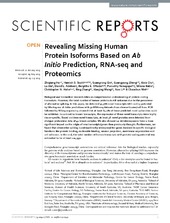| dc.contributor.author | Hu, Zhiqiang | en_US |
| dc.contributor.author | Scott, Hamish S. | en_US |
| dc.contributor.author | Qin, Guangrong | en_US |
| dc.contributor.author | Zheng, Guangyong | en_US |
| dc.contributor.author | Chu, Xixia | en_US |
| dc.contributor.author | Xie, Lu | en_US |
| dc.contributor.author | Adelson, David L. | en_US |
| dc.contributor.author | Oftedal, Bergithe Eikeland | en_US |
| dc.contributor.author | Venugopal, Parvathy | en_US |
| dc.contributor.author | Babic, Milena | en_US |
| dc.contributor.author | Hahn, Christopher N. | en_US |
| dc.contributor.author | Zhang, Bing | en_US |
| dc.contributor.author | Wang, Xiaojing | en_US |
| dc.contributor.author | Li, Nan | en_US |
| dc.contributor.author | Wei, Chaochun | en_US |
| dc.date.accessioned | 2016-05-26T07:19:17Z | |
| dc.date.available | 2016-05-26T07:19:17Z | |
| dc.date.issued | 2015-07-09 | |
| dc.Published | Scientific Reports 2015, 5:10940 | eng |
| dc.identifier.issn | 2045-2322 | |
| dc.identifier.uri | https://hdl.handle.net/1956/12008 | |
| dc.description.abstract | Biological and biomedical research relies on comprehensive understanding of protein-coding transcripts. However, the total number of human proteins is still unknown due to the prevalence of alternative splicing. In this paper, we detected 31,566 novel transcripts with coding potential by filtering our ab initio predictions with 50 RNA-seq datasets from diverse tissues/cell lines. PCR followed by MiSeq sequencing showed that at least 84.1% of these predicted novel splice sites could be validated. In contrast to known transcripts, the expression of these novel transcripts were highly tissue-specific. Based on these novel transcripts, at least 36 novel proteins were detected from shotgun proteomics data of 41 breast samples. We also showed L1 retrotransposons have a more significant impact on the origin of new transcripts/genes than previously thought. Furthermore, we found that alternative splicing is extraordinarily widespread for genes involved in specific biological functions like protein binding, nucleoside binding, neuron projection, membrane organization and cell adhesion. In the end, the total number of human transcripts with protein-coding potential was estimated to be at least 204,950. | en_US |
| dc.language.iso | eng | eng |
| dc.publisher | Nature Publishing Group | eng |
| dc.rights | Attribution CC BY 4.0 | eng |
| dc.rights.uri | http://creativecommons.org/licenses/by/4.0 | eng |
| dc.subject | Computational models | eng |
| dc.subject | Data integration | eng |
| dc.subject | Transcriptomics | eng |
| dc.title | Revealing missing human protein isoforms based on Ab initio prediction, RNA-seq and proteomics | en_US |
| dc.type | Peer reviewed | |
| dc.type | Journal article | |
| dc.date.updated | 2016-03-08T10:46:13Z | |
| dc.description.version | publishedVersion | en_US |
| dc.identifier.doi | https://doi.org/10.1038/srep10940 | |
| dc.identifier.cristin | 1338393 | |
| dc.subject.nsi | VDP::Matematikk og Naturvitenskap: 400 | en_US |

